The Cannondale Moterra SL has the best mix of weight, power, range and handling of any eMTB out there right now (that doesn’t cost a five figure sum).
- Brand: Cannondale
- Product: Moterra SL 1
- From: Cannondale
- Price: £8,550
- Tested by: The Extended Singletrackworld Family for 6 months
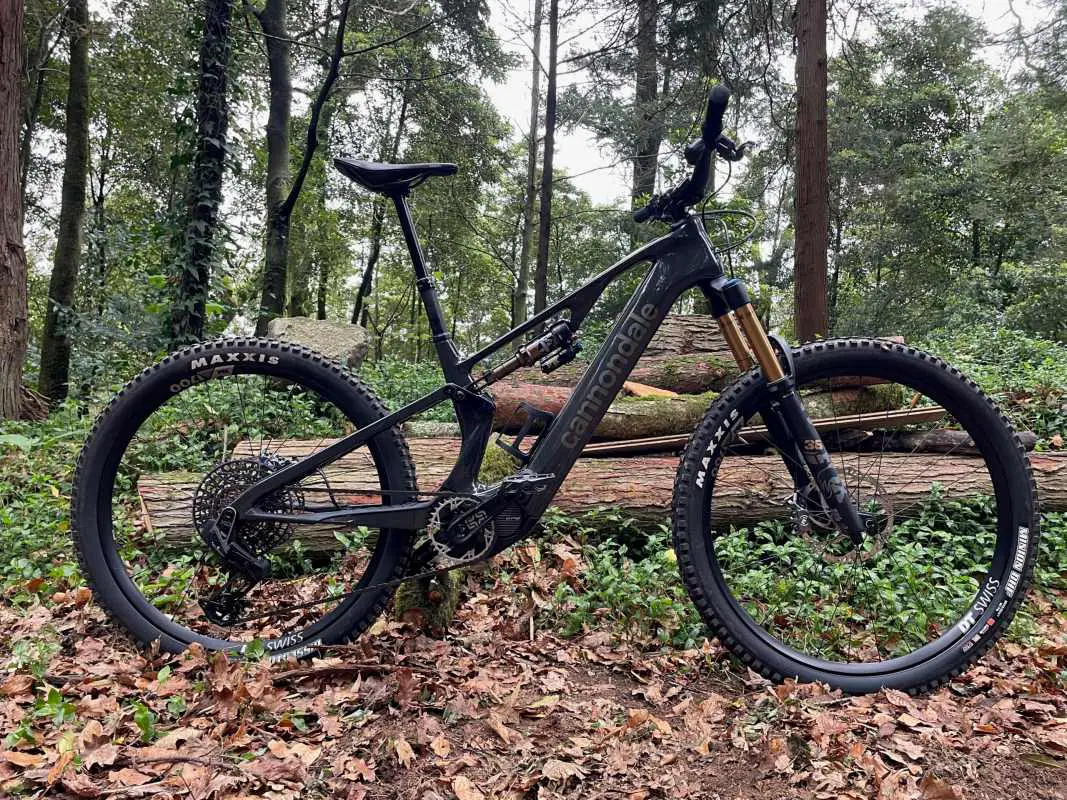
Pros
- Fun and capable handling
- Impressive range
- Incredibly versatile; from SL to DH, it’s just a tyre change and app tweak away
Cons
- Not cheap
- Cranks needed tightening occasionaly
- Longer travel dropper would be nice
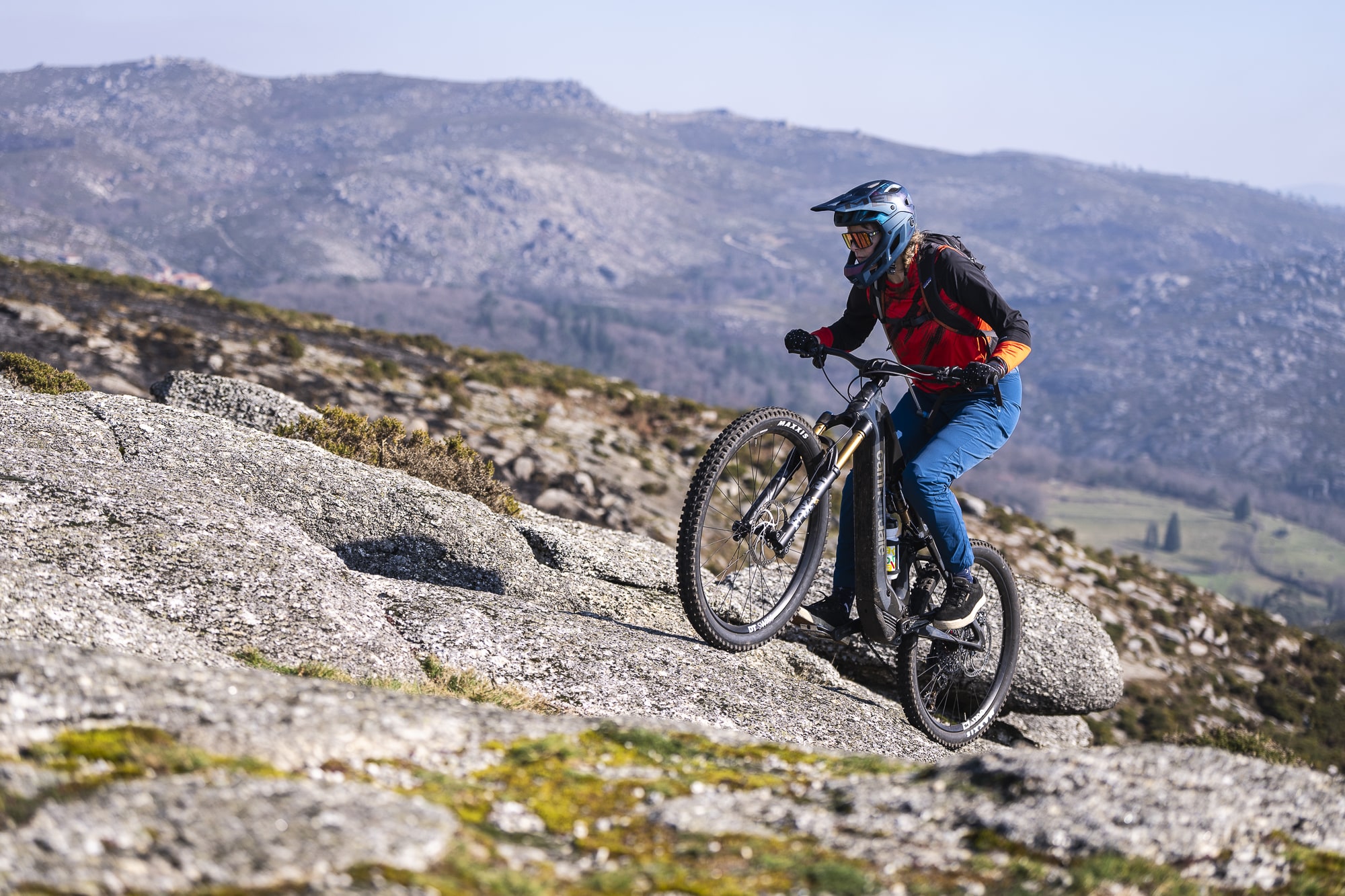
Apparently the Cannondale Moterra SL came about after an internal debate about what an eMTB should be.
Should it let you whizz up the hills without range anxiety (or ever having to utter the cursed words ‘I’ve got enough left for one more lap’)? Should you be able to throw shapes and flick it around the trail like a mountain bike that uses leg power alone?
Does SL stand for Super Light, Slightly Lighter, or Slightly Less Good?
The folks at Cannondale thought they could have their cake and eat it, and set about making a bike that would deliver all the torque and battery capacity of a full fat ebike, but with the handling of traditional full suspension bike. The Moterra SL is the result.
And it’s our pick for the Best eMTB of the Year. It’s easily the eMTB that everyone had the most fun on, whether it was XC mile munching, exploratory trail riding, or hot lappin’ da DH schredz (ahem). In a market seemingly wholly obsessed with one metric (torque), it was the Moterra SL that proved that bikes still have to have more going for them than raw power.
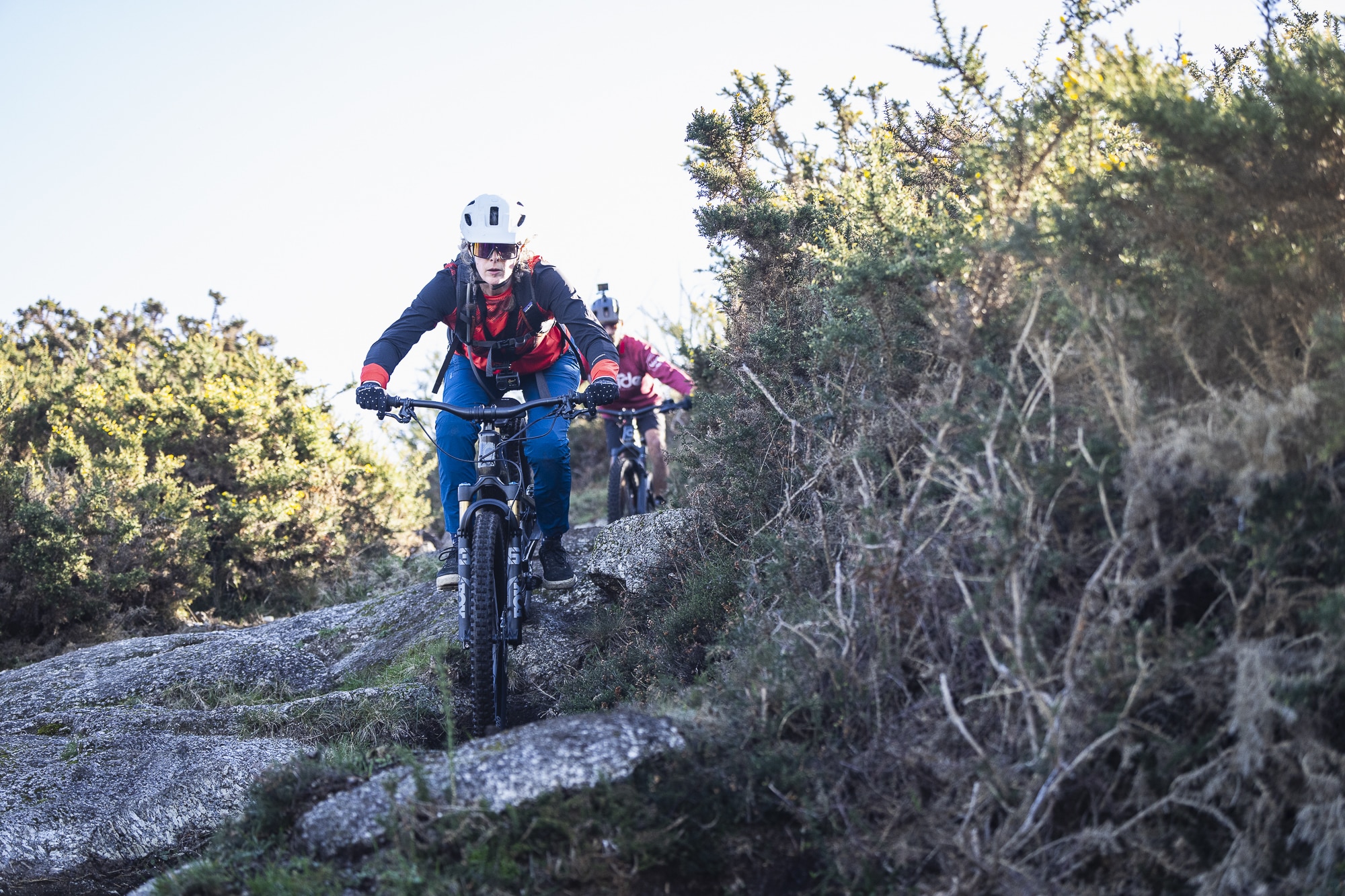
Three model range
All models in the Moterra SL range are 150mm rear/160mm front travel bikes, and come with a mullet wheel set up – although a flip chip allows you to run a 29er front and rear if you choose.
Weighing in around 20kg for a whole bike, it’s still up there near the weight of old alloy DH sleds – but that was fun even without a motor, right? And as we’ve said on numerous times this last year, 20kg is possibly the ideal weight for A Mountain BIke. Planted, excellent sprung/unsprung suspension balance, and still manoeuvrable (not to mention lift-able over obstacles etc).
The Moterra SL comes fitted with a Shimano EP801 motor, delivering 85Nm of torque. You get a 601Wh battery which is Cannondale’s own design of battery, complete with dense battery construction that packs more power into each cell, plus a lightweight liner to keep the weight down.
Five modes, three colours
The motor has been tuned to give five modes instead of Shimano’s usual three:
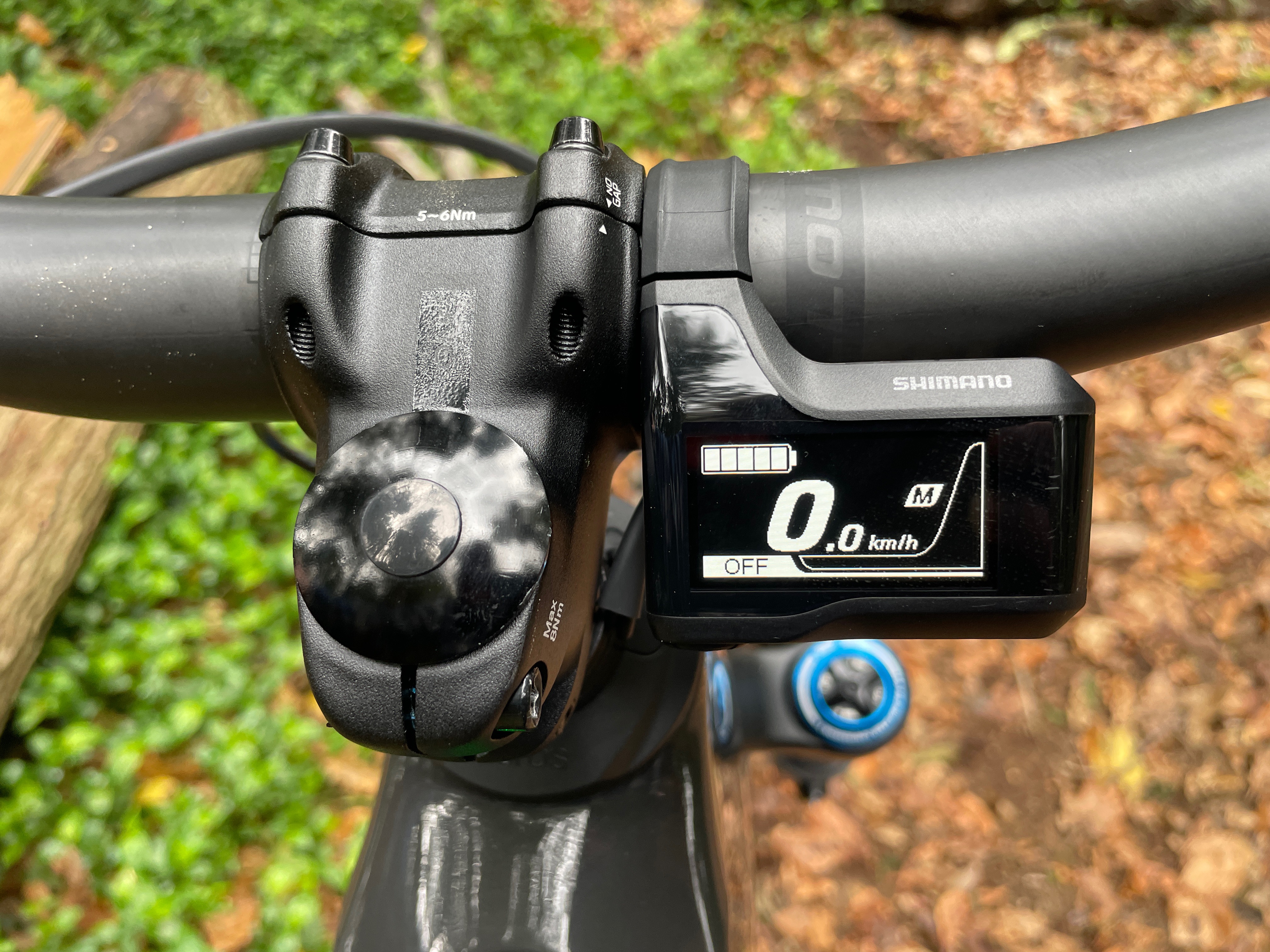
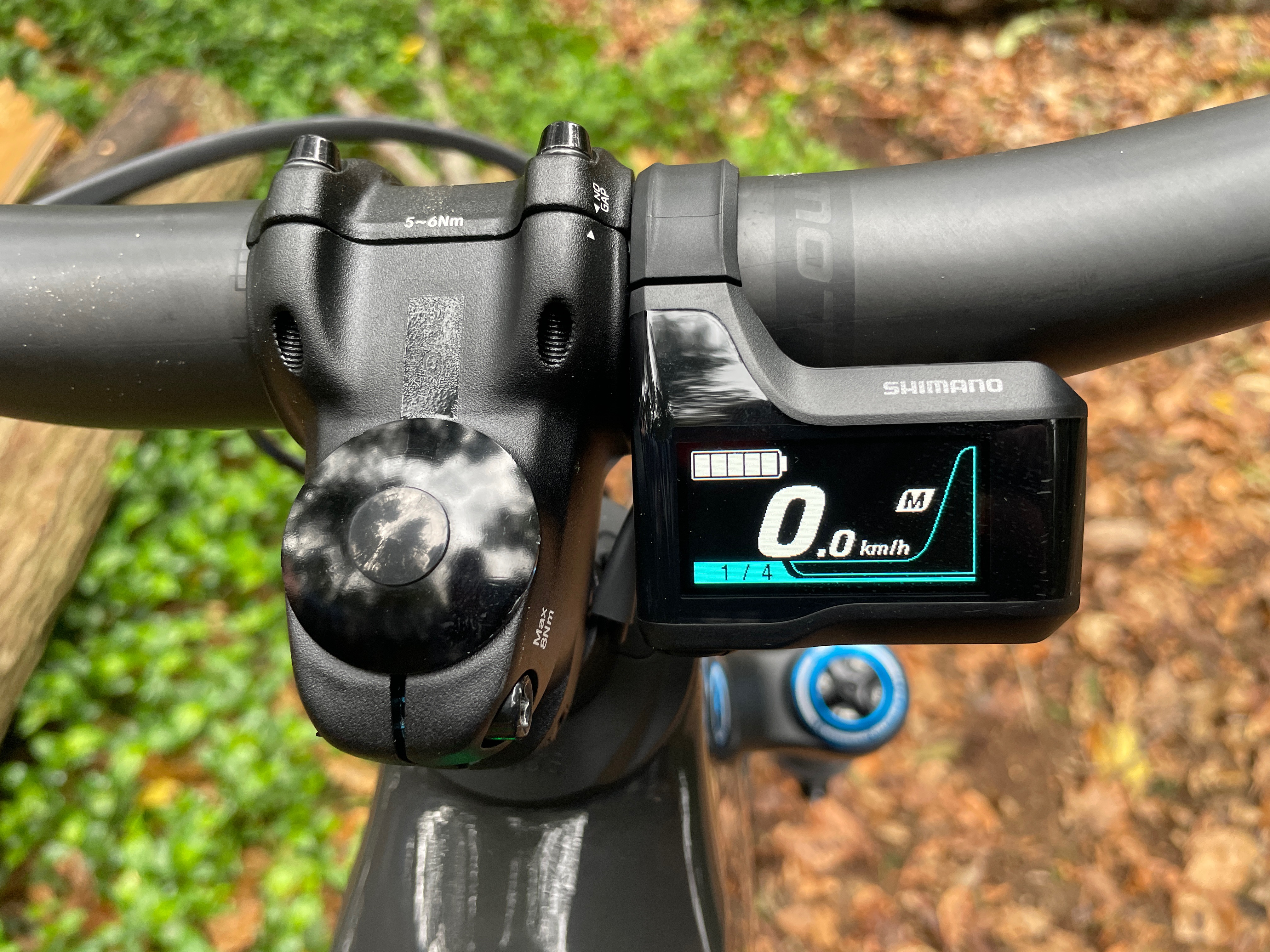
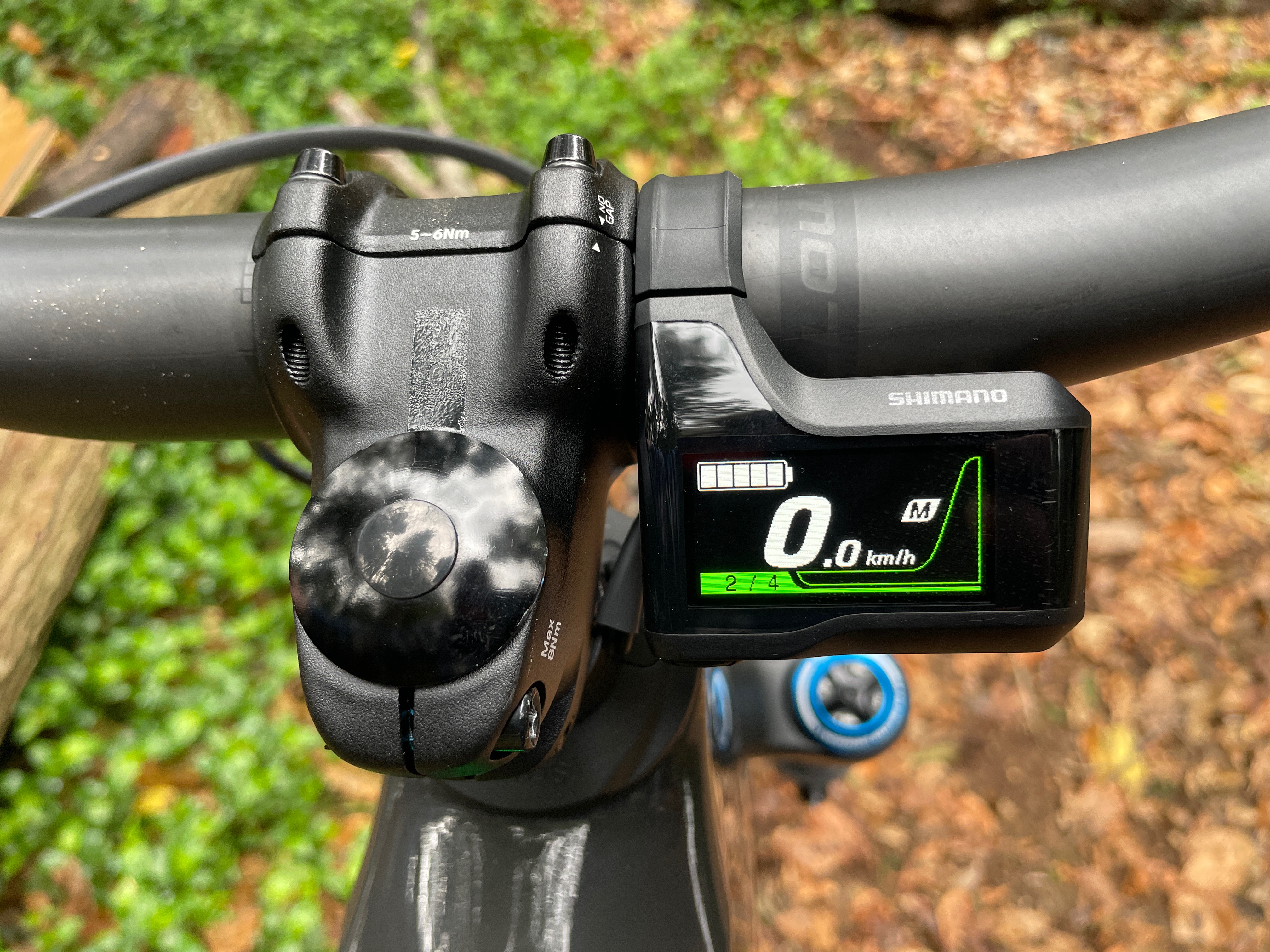
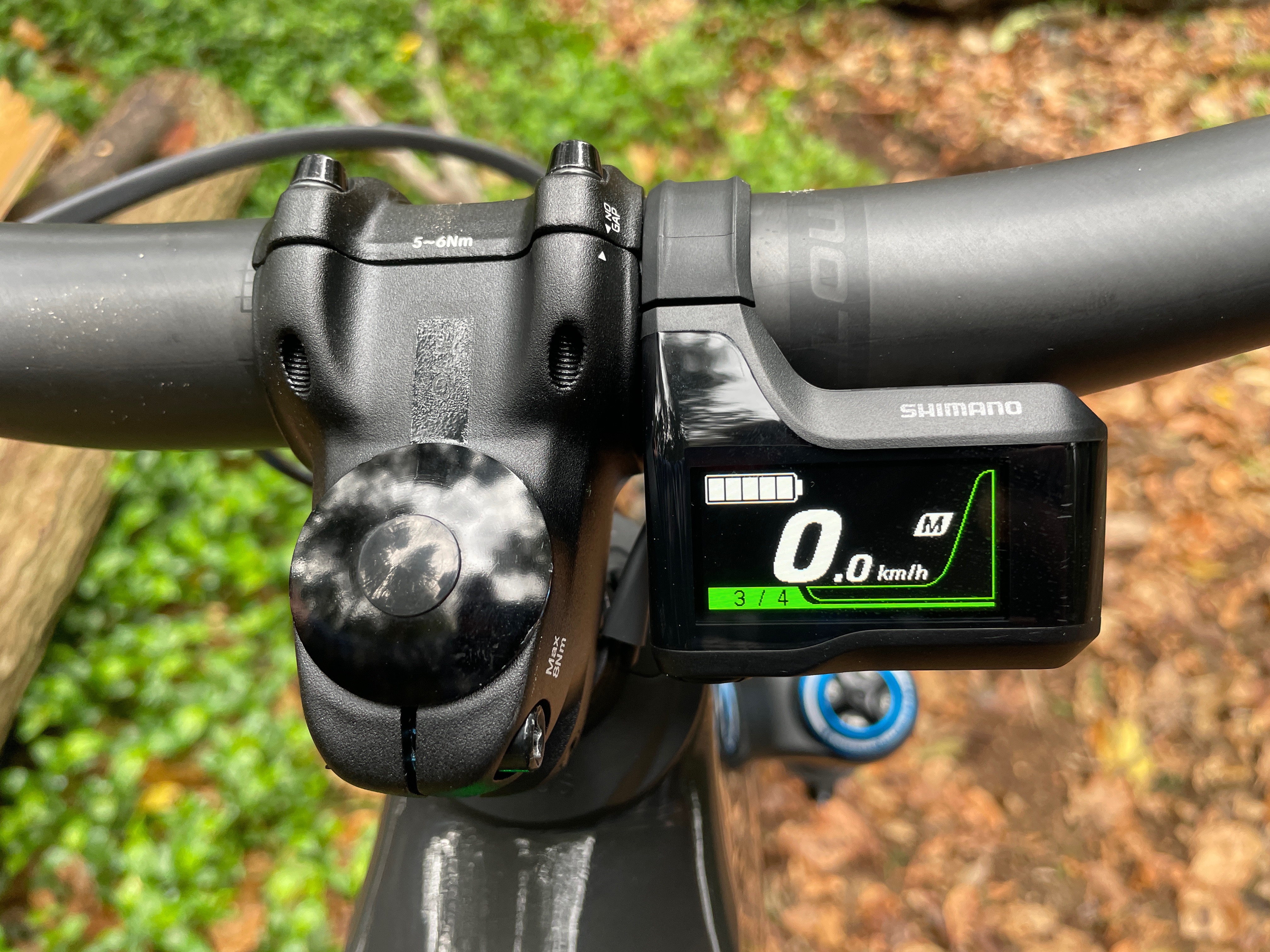
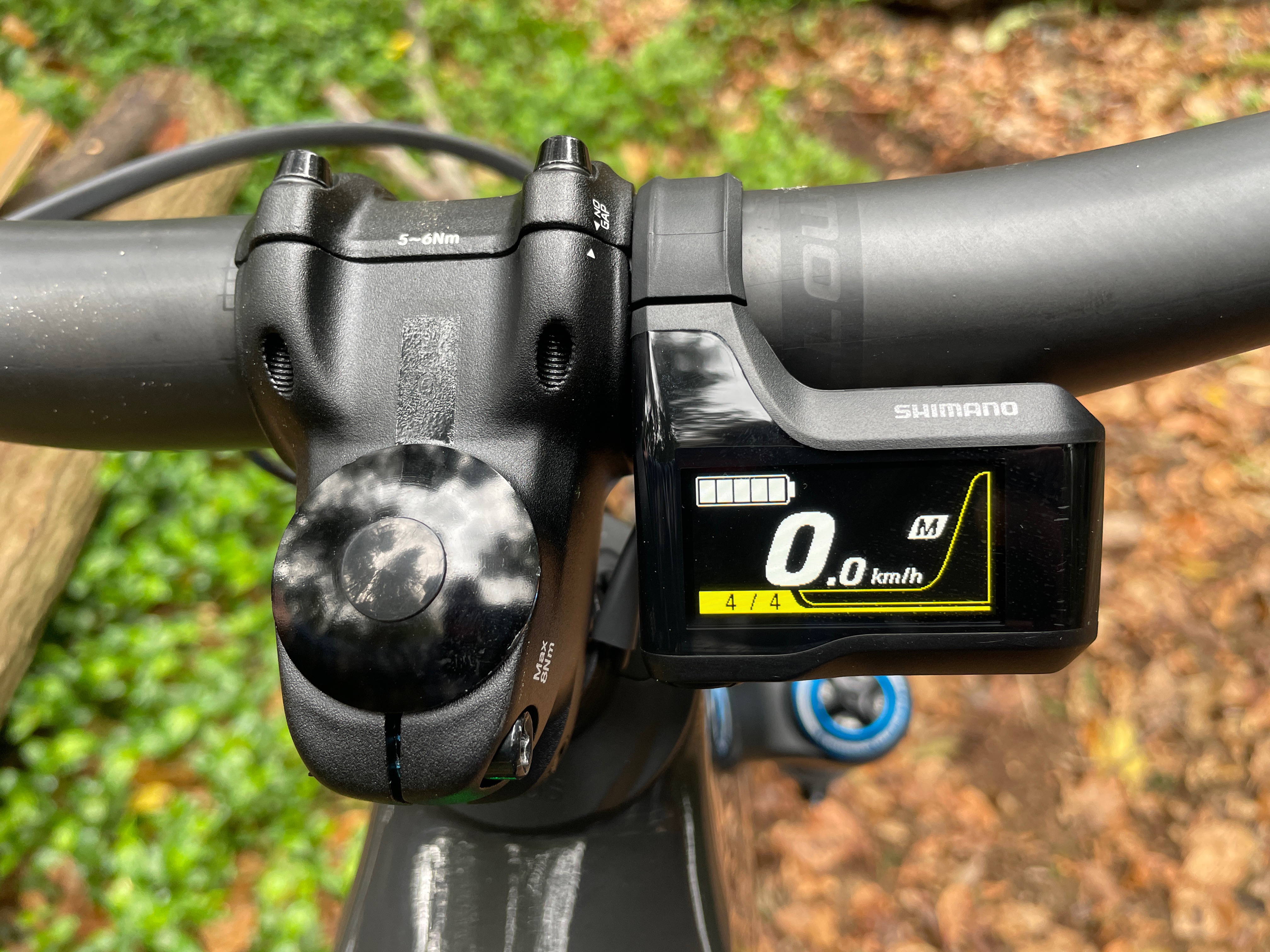
You can use the Shimano E-Tube app to adjust the behaviour and number of modes, however there is currently no way to change the colour between the modes. This means you’re stuck with same-colour modes next to one another, and the only thing that shows the difference between them is a tiny number that is difficult to decipher when riding.
On the top tube there is the power button and LED display to indicate battery charge and assist mode. If you wanted an extra clean stealth look, you could operate the bike without the extra display screen.
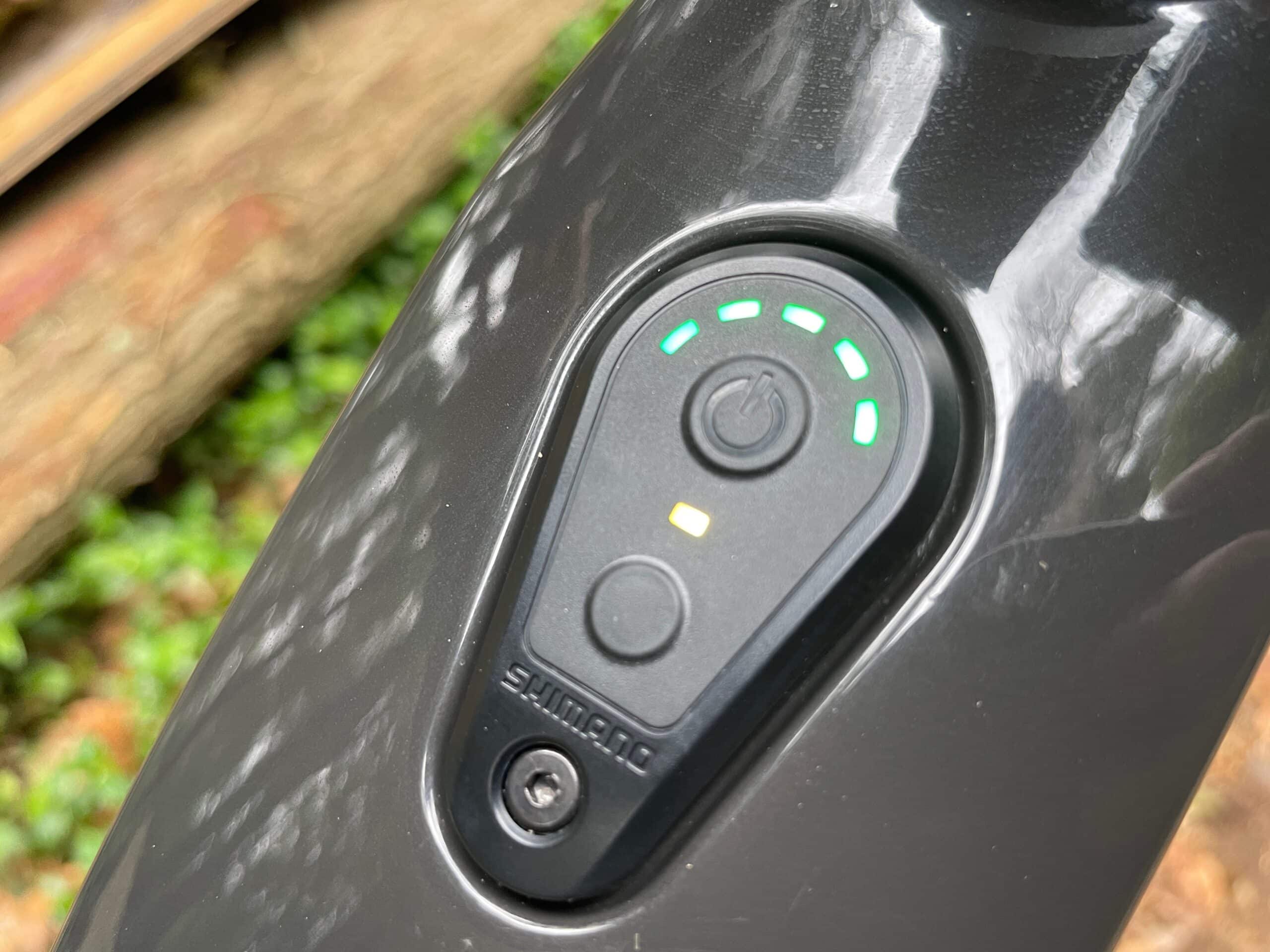
For what it’s worth, we ended up knockibng the settings down to the classic three (blue, green, yellow) and running the Trail/green slightly turned down (for increased range) and the Boost/yellow turned up to the max (for steep inclines or power hour lunchtime blasts).
Two carbons, one flex
The Moterra SL comes in two versions of the frame: the £12,500 Moterra SL LAB 71 is the tricked out version with fancier lighter weight carbon construction. While the other two models (this £8,550 SL 1 and the £6,550 SL 2) share the same slightly heavier carbon frame.
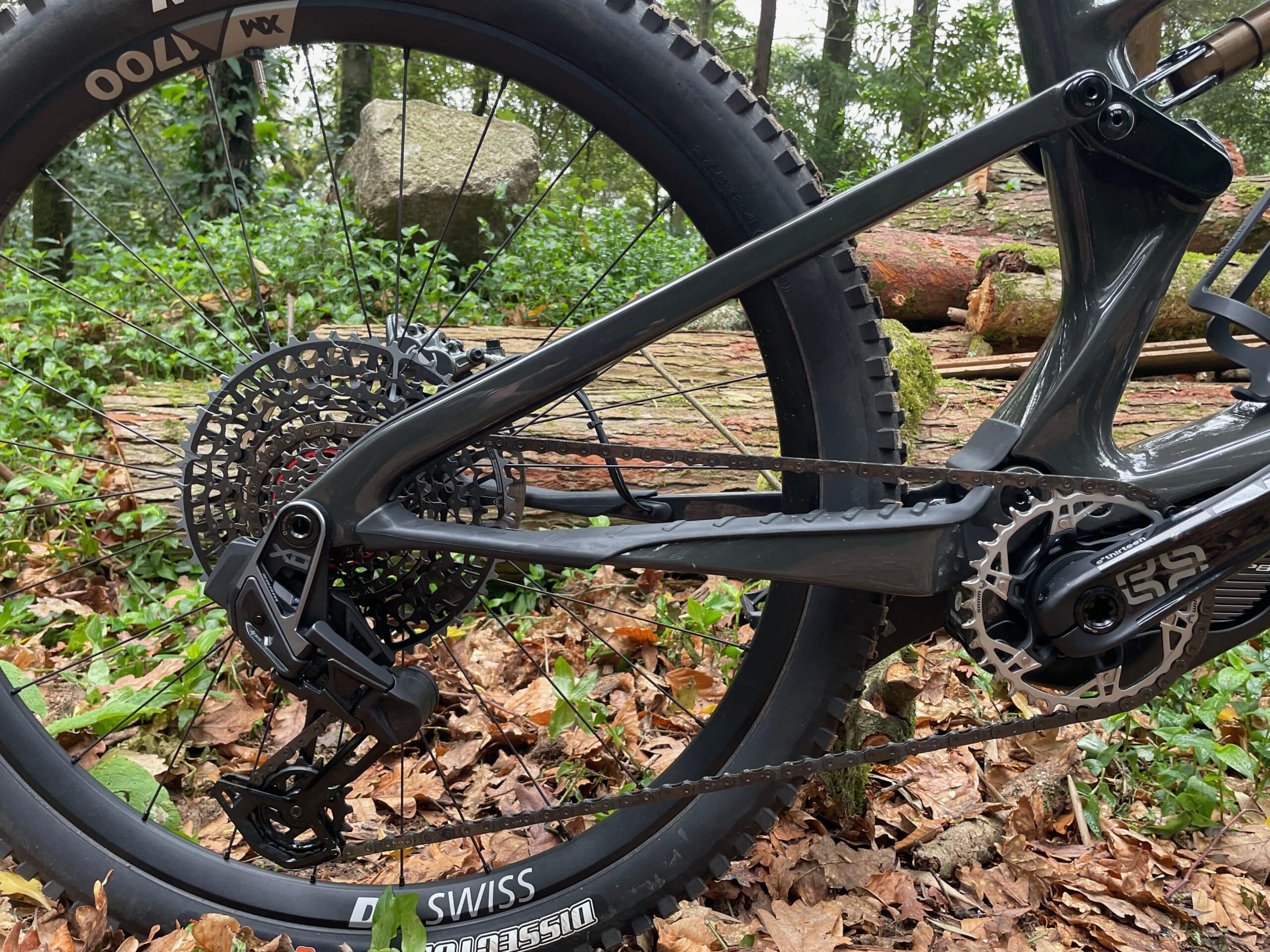
All versions come equipped with a flex pivot. This is a thin ‘science bendy’ section of carbon which eliminates the need for a bearing. This technology has been used in other Cannondale bikes for some time, and is now brought to the might of the Moterra, which is tested and warrantied right up to E-EDR World Series level.
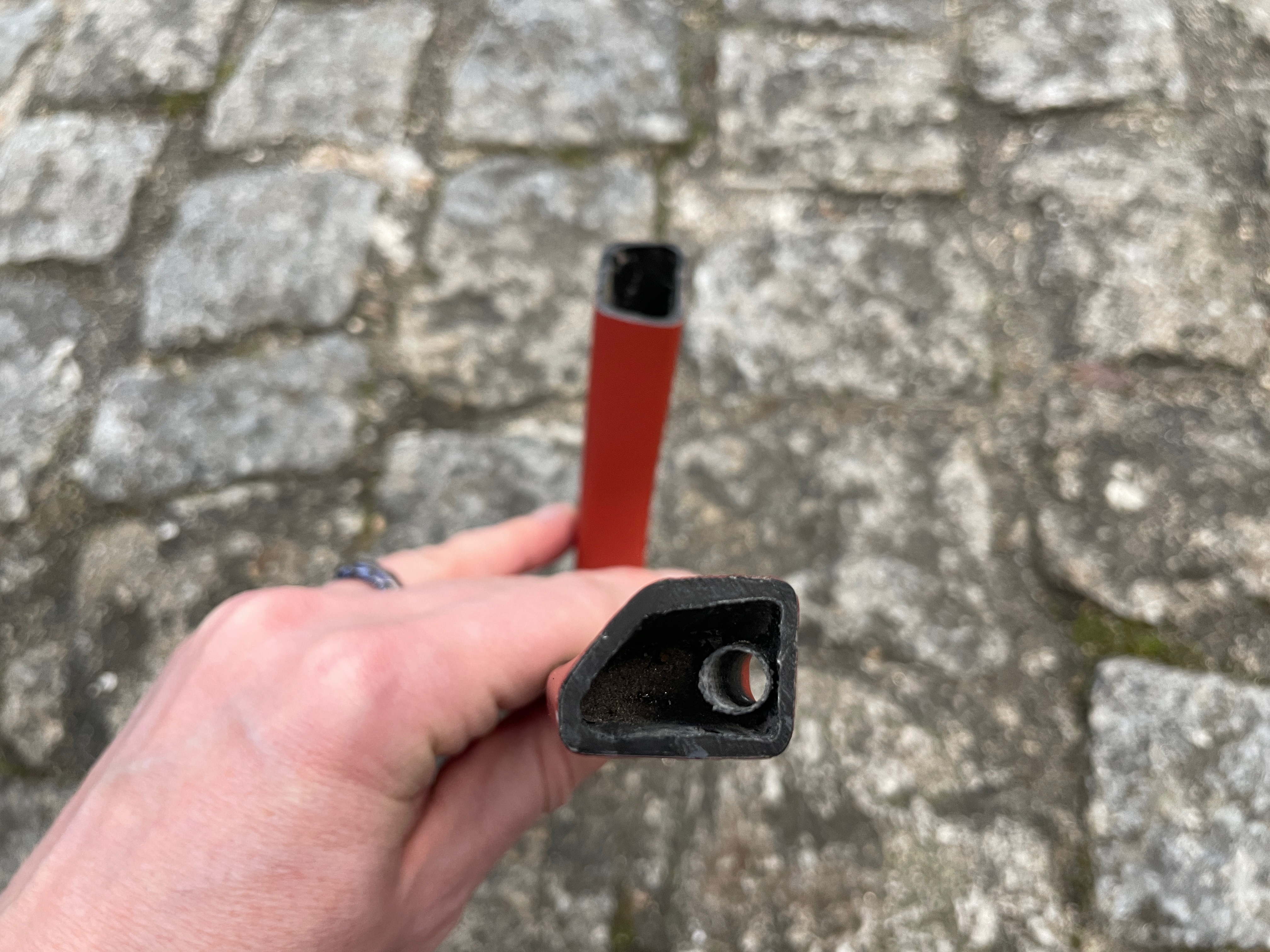
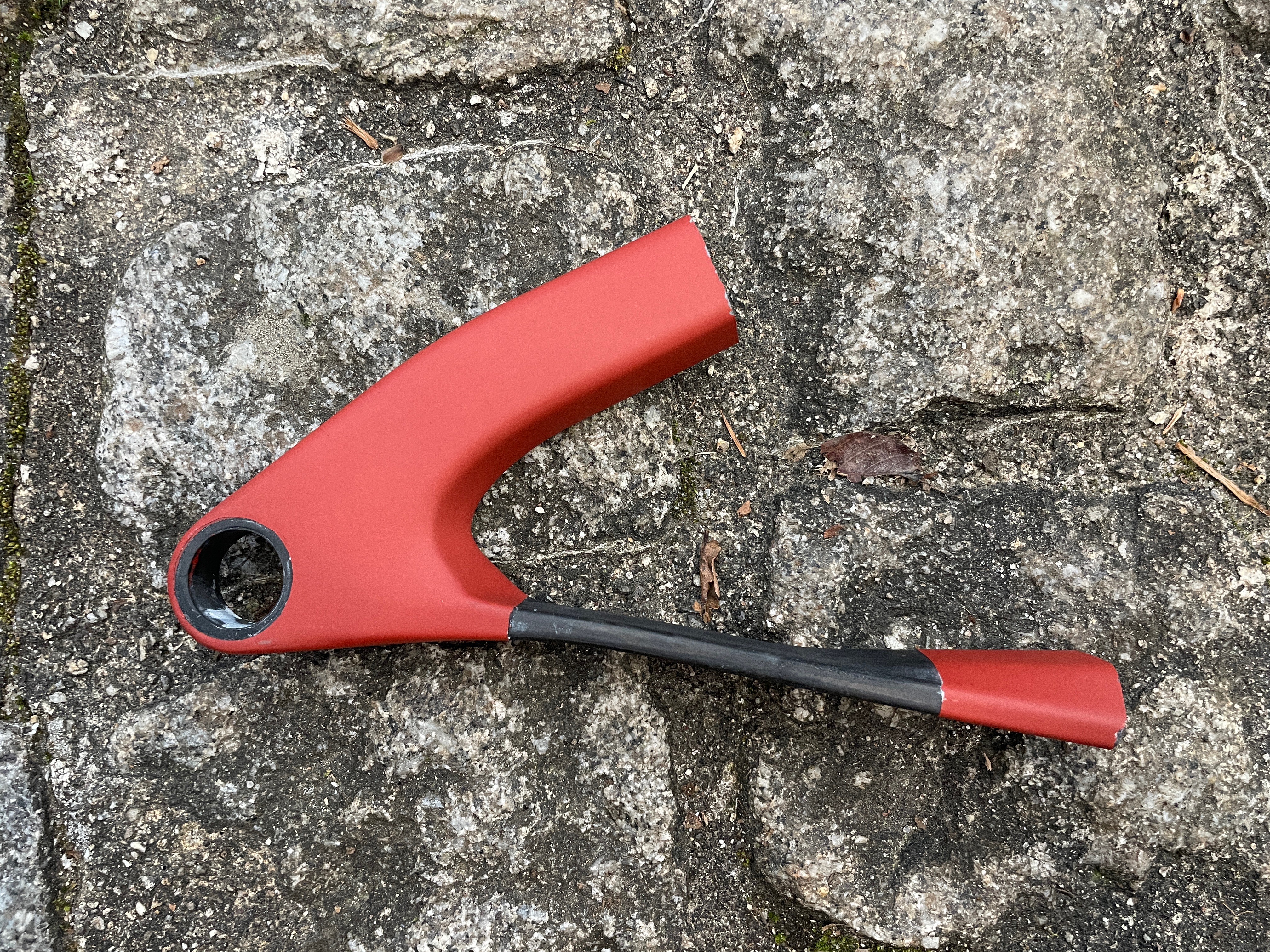
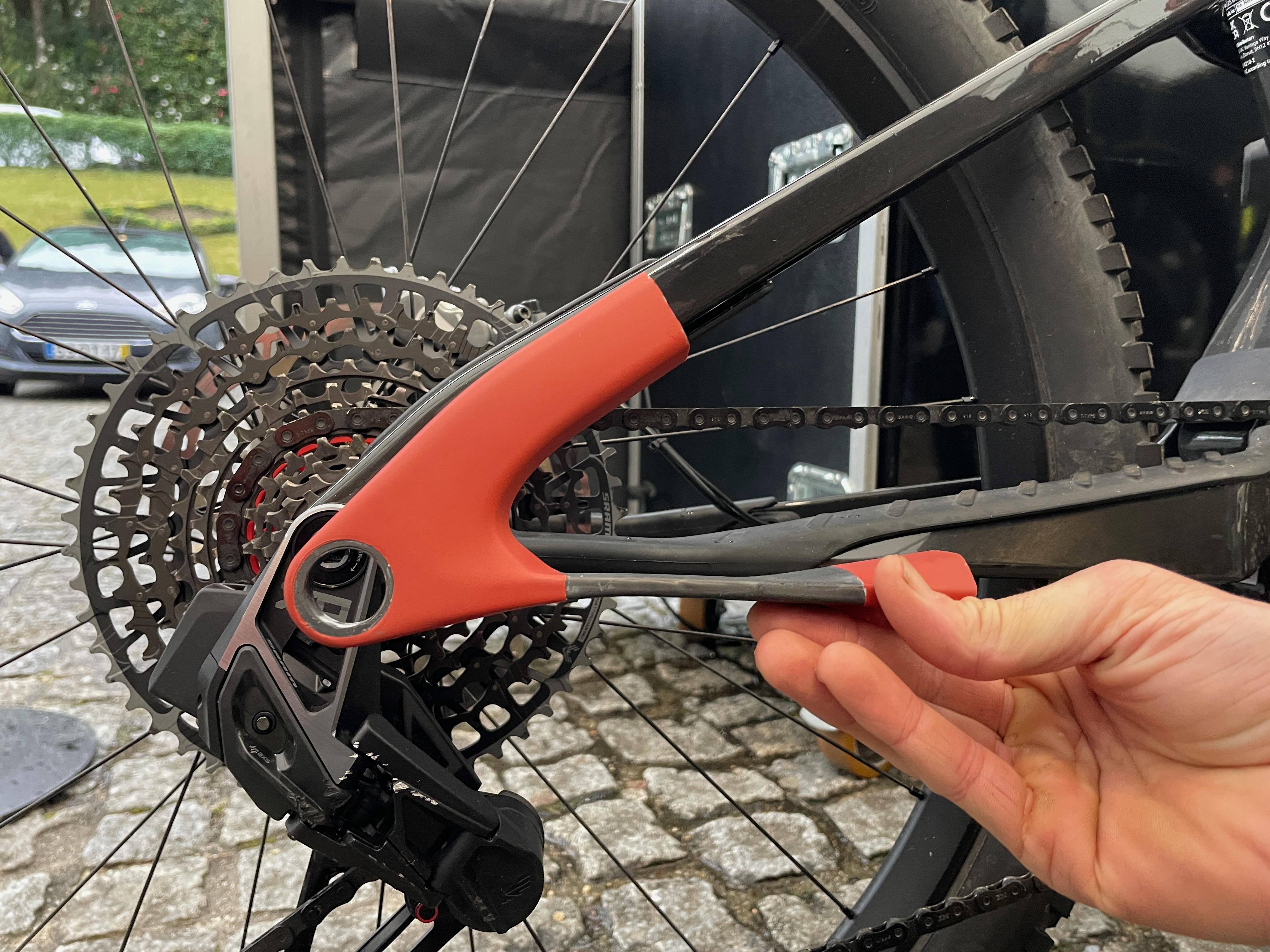
Both versions of the frame are proportionately sized in an attempt to give the same ride experience across sizes. Cannondale calls this Proprortional Response geometry. This gives a reach of 445mm on a size Medium and 470mm on a Large. So nothing mega reach-y.
More interestingly the chainstays also vary in length. Pleasingly they’re all on the not-short end of the spectrum. The Small and Medium size has 449mm chainstays, the Large has 453mm, the XL has 458mm. Good work Cannondale.
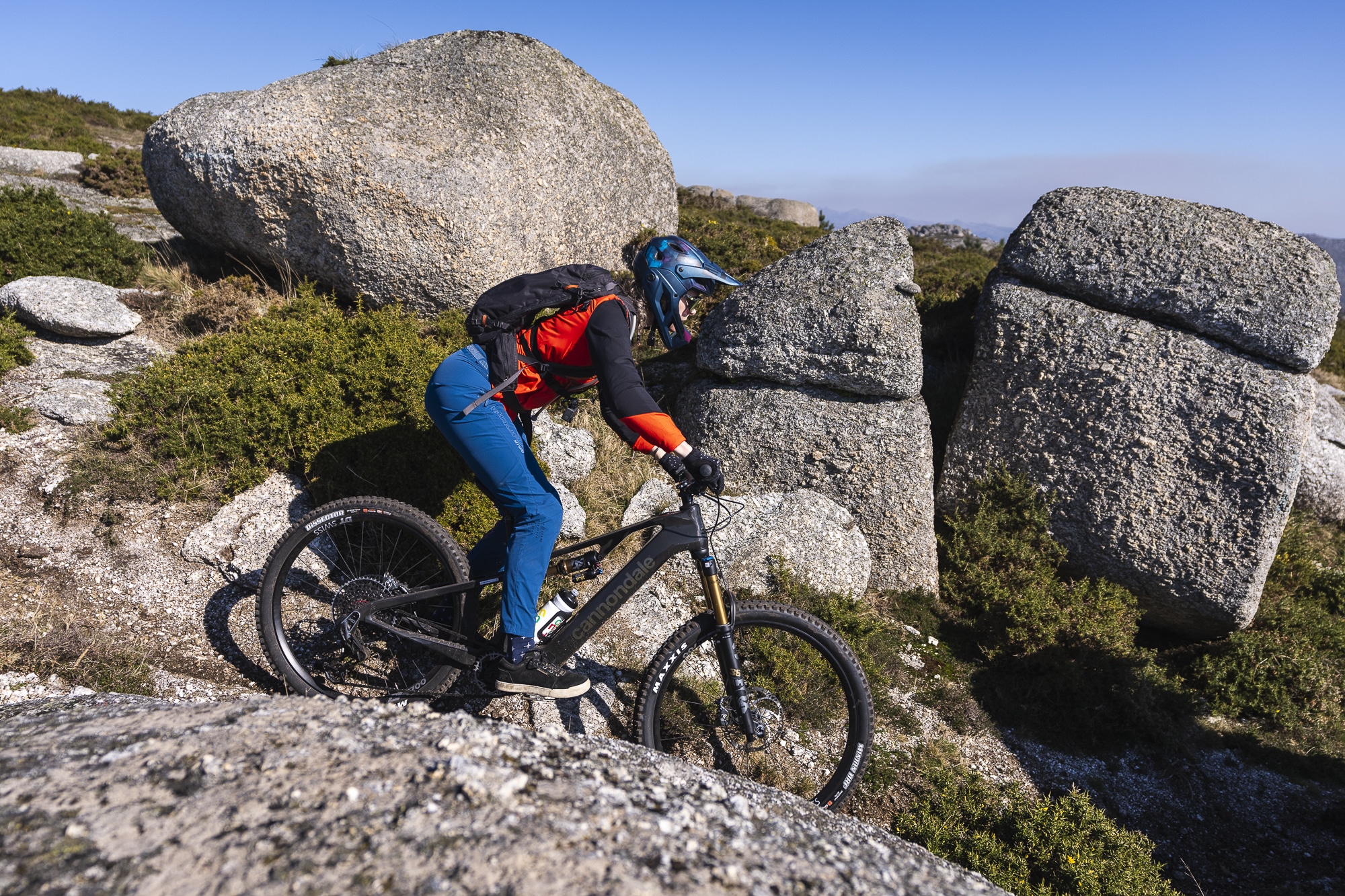
Slack attack
The head angle is 62.5° across all sizes, and while the actual angle varies the effective seat tube angle is 77°. Droppers of 170mm length are fitted in sizes M-XL, although I’m told a 200mm One up dropper will fit.
The frame has room for a bottle – just. Like a lot of eMTBs, it’s a little tight to get a full sized bottle in there, and the bike comes with a slightly side loading cage.
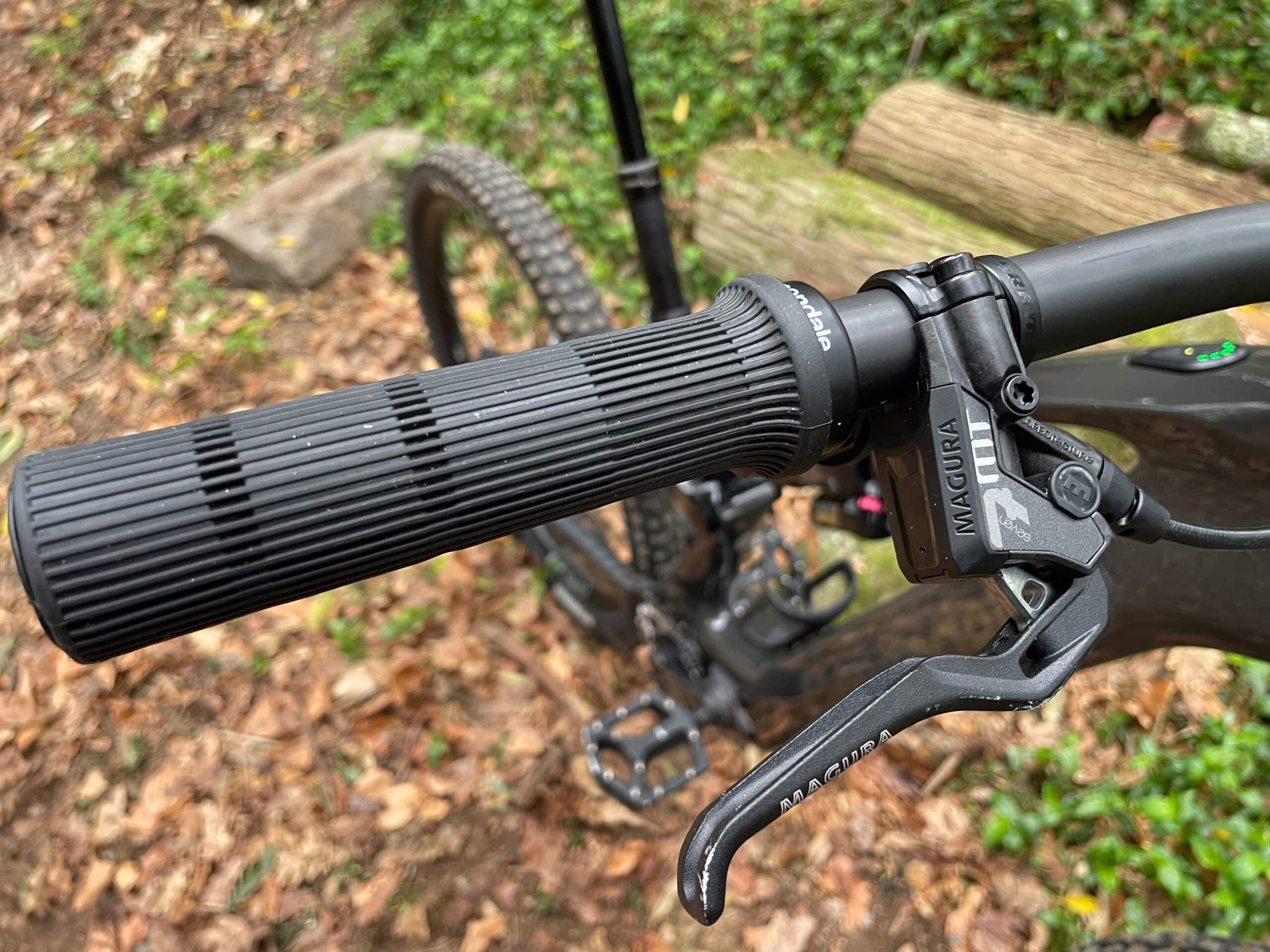
Build kit
Both at the press camp and back in the UK, we test rode the Cannondale Moterra SL 1 in European spec. This comes with SRAM Eagle XO AXS T-Type drivetrain, Magura MT 4-piston brakes, Cannondale DownLow dropper post.
It’s a mix of mechanical and electronic that we’re happy with. Having said that, if you’ve not ridden the SRAM pods previously it will take you a bit of time to get all the dropper/assist/gears positions straight in your head!
We found the Magura brakes to have a nice decisive feel to them, giving plenty of confidence that they’ll stop you – there’s no sensation of flex or marshmallow squish that you can sometimes get with ebike vs brakes. [NB: the UK spec of the SL 1 now comes with SRAM Code Silver Stealth brakes]
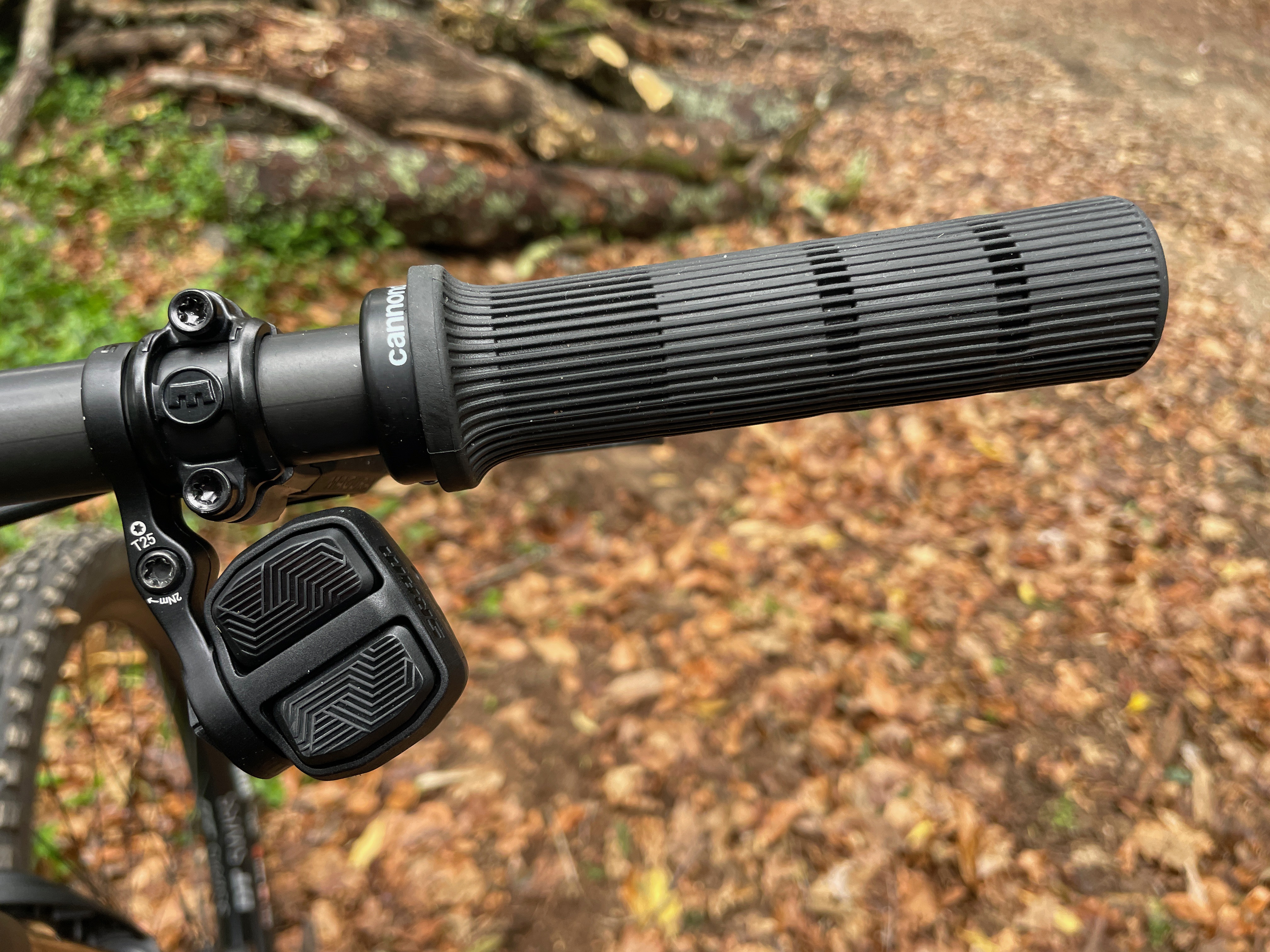
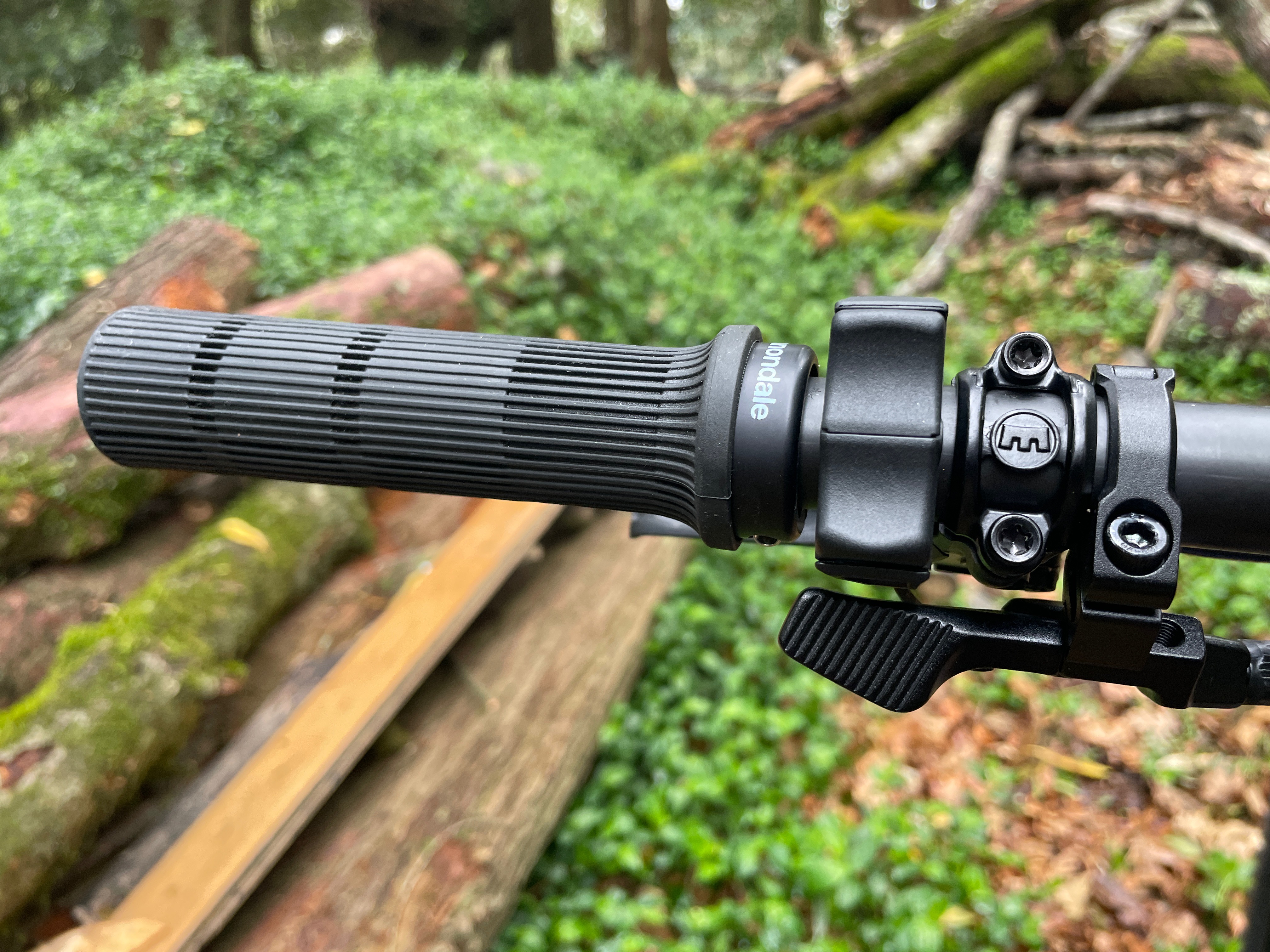
The bike comes with a carbon bar and fairly chunky Cannondale grips. No-one really liked the grips; we either ended up with aching hands due to grip girth or sore (bare) hands due to the harsh rubber ‘cheese grater’ effect. Do a grip swap before you leave the shop floor.
The Fox 36 Factory fork and Fox Float X Factory shock offered plenty of support. Lighter test riders experimented with removing volume spacers tokens to good effect, whilst other testers were fine with it set as stock. As it was though, we had no trouble with brake dive or fork flex – the Fox 36 feels an appropriate choice for an e-bike. Certainly more lively and just more usable than a 38mm stanchion fork.
Rocky riding
Coupled with that slack head angle, we were rolling or dropping steep boulders and steps, without any fear of getting caught up and being spat out. We did ‘simp out’ and catch the underside of the motor on a couple of occasions, but there’s a big bash plate there designed for that very situation.
We do think an even shorter crank than the 165mm that comes fitted would be an advantage on this bike. We did experience rather a lot of pedal strikes. The 165mm cranks are perhaps the only component that feels a little out of step with the time – many ebikes these days come with shorter cranks. The cranks did actually come loose a few times, presumably due to the impacts they receive, so that’s something to watch out for and potentially upgrade/swap out.
The tyres are a pleasingly sensible and inoffensive Maxxis Minion DHF and Dissector EXO+ rubbers – no need to budget for swapping to something else, well not immediately anyway.
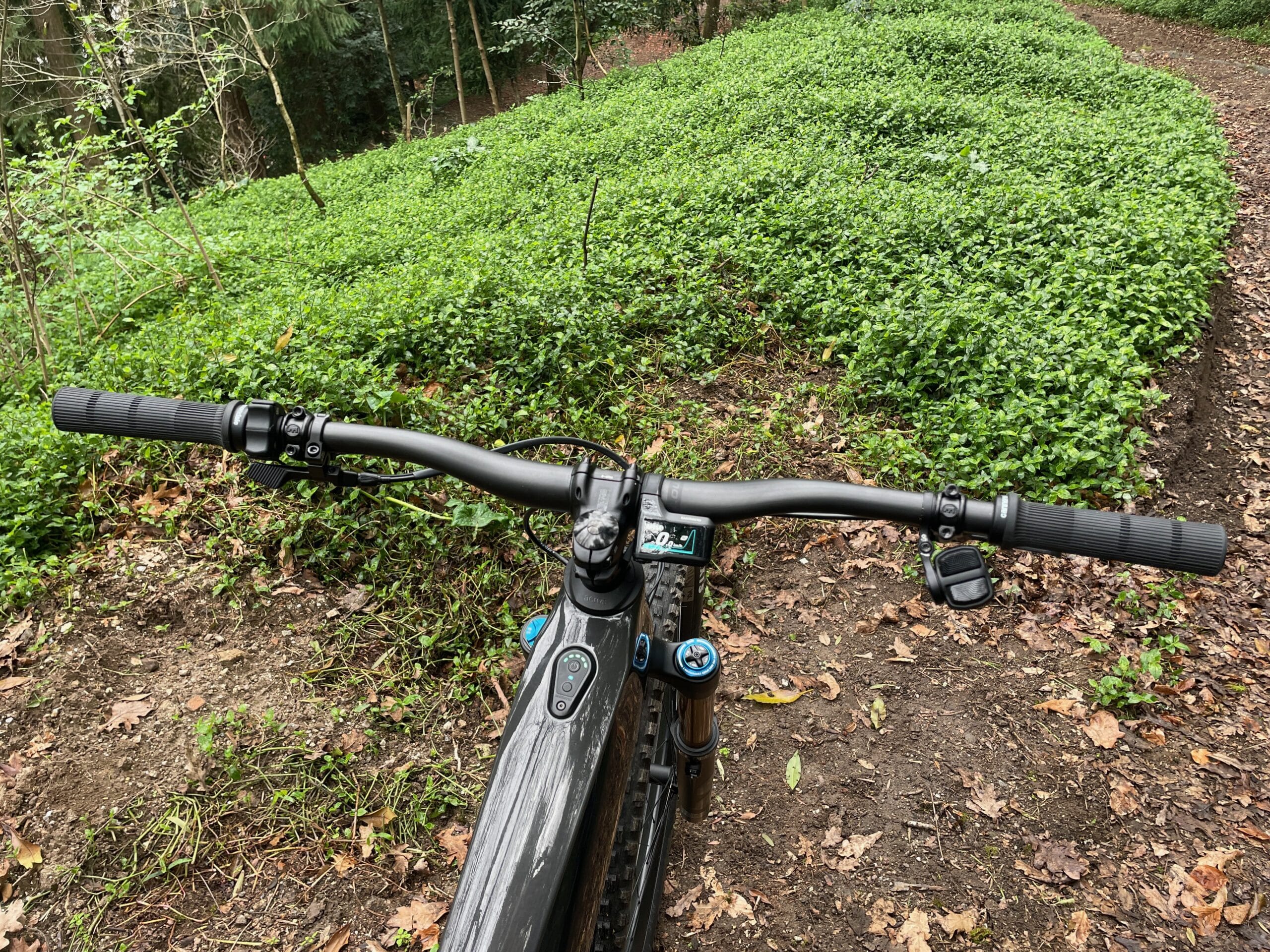
How does 5kg weight saving translate to the trail?
It’s certainly noticeable and gives something approaching the oft-toted ‘natural’ ride feel. Leaning the bike feels comfortable, and hauling on the brakes or tackling some low speed technical terrain is absent of the ‘oil tanker’ sensation you can get with a heavier e-beast.
We found ourselves being able pick my lines through rock gardens rather than having to steamroller through and hope for the best – much more like the sort of ride we’d be hoping for from an acoustic enduro bike.
You’ll not be in a hurry to lift it over a fence or stile, but it can be done. It’s not significantly different to a burly enduro bike. It’s light enough that Boost does seem largely redundant for most terrain – on a smooth climb it’s easy enough to whizz uphill in chilled fashion in Trail mode.
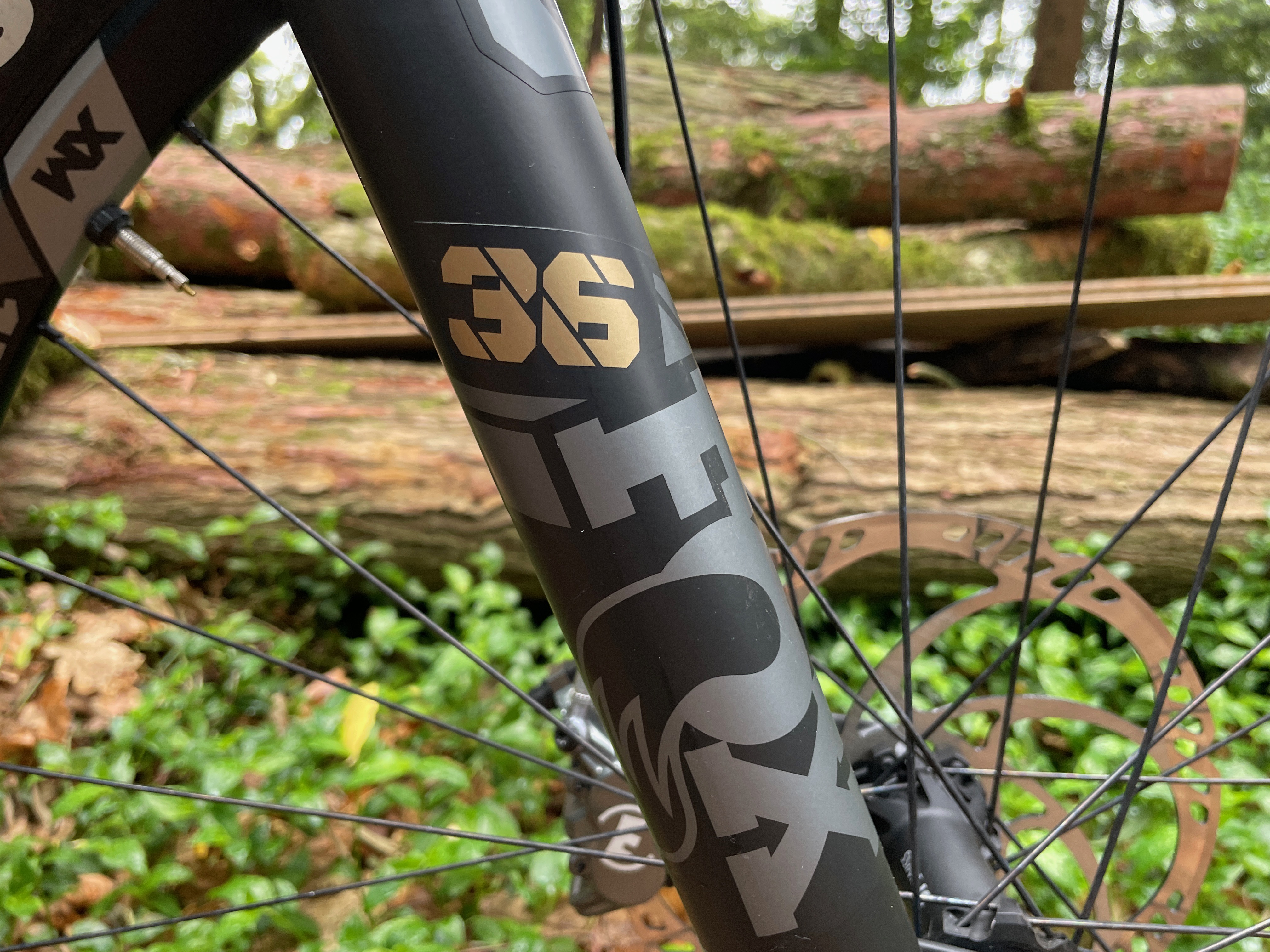
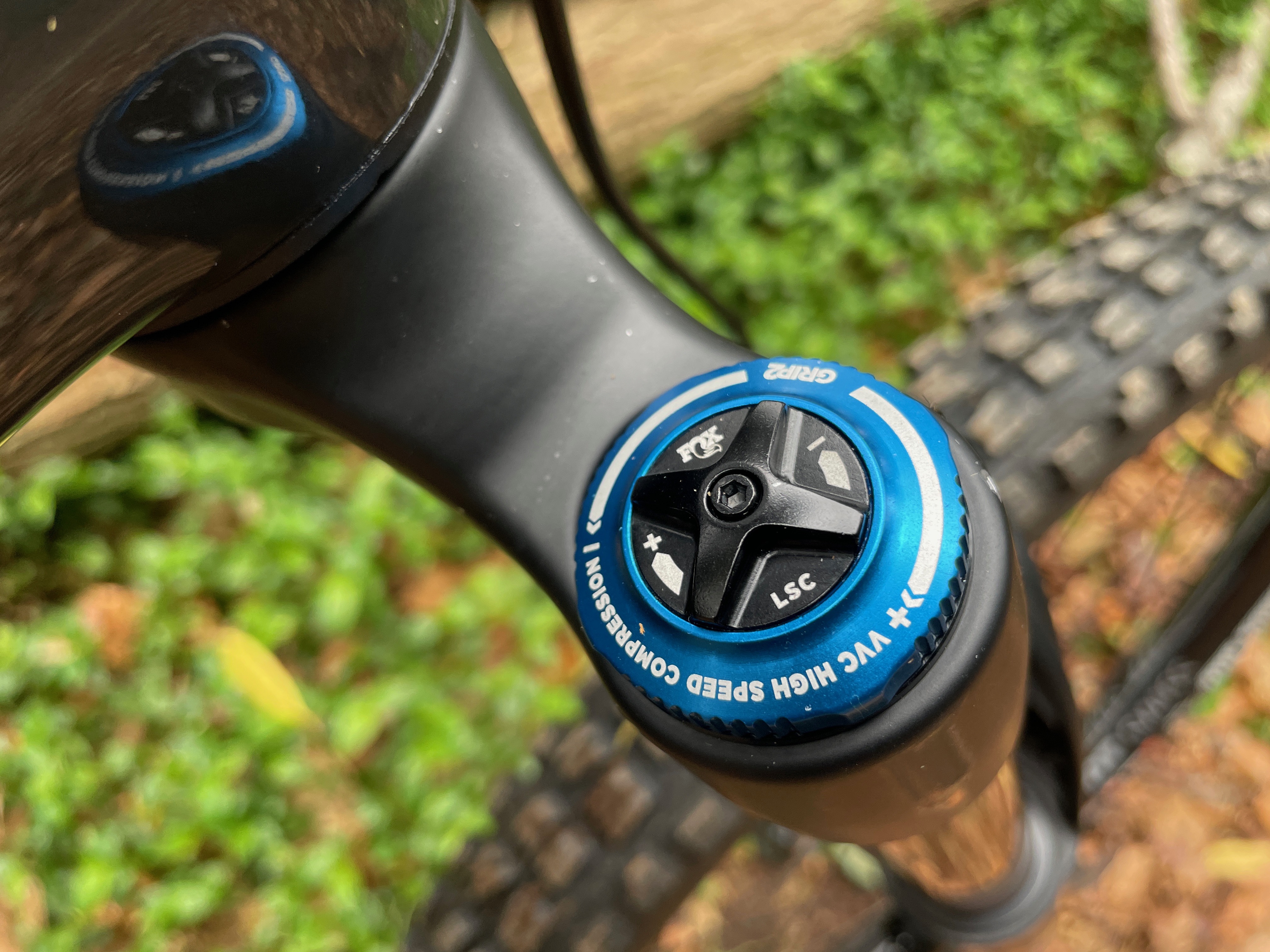
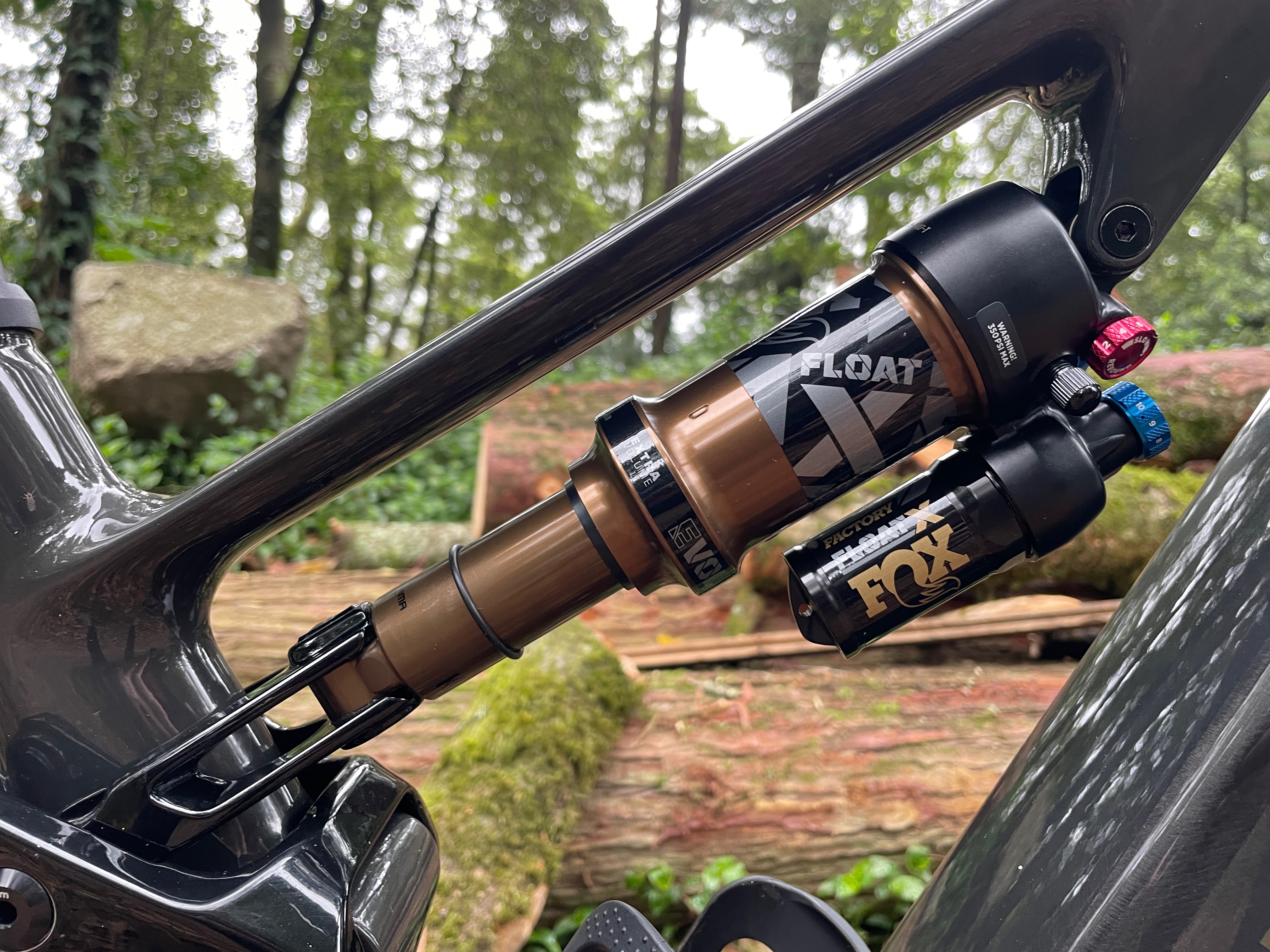
Scores on the doors
On most of our test rides we finished with two bars (40%) of battery still remaining. We did briefly wonder if reducing the battery size might make sense, but then again the weight saving would be negligible for the loss of range. So we reckon Cannondale have it right with the dense 601Wh battery.
The bike comes with the same Shimano EP8 whine – or mosquito buzz – that you get elsewhere, but otherwise the bike was pleasingly quiet and free of annoying rattles or clunks. This is true for all the EP801 powered bikes we’ve experienced recently. Maybe we’re just lucky.
The geometry of the Moterra SL is brilliantly unique. A slack AF head angle, decently long chainstays, steep seat angle, super short seat tube and a not very long reach. The reach on a Large size is 470mm. To be honest, it’s perhaps a bit short for the six footers amongst us (the XL reach is 505mm by the way) so a lot of riders may find themselves a bit stranded between sizes (L vs XL) but for once we’d probably err on the side of not upsizing. That head angle puts the front wheel far out in front which really helps offset the short reach feel. And the low BB really helps with stability.
For those not faced with the between-sizes issue, the Moterra SL absolutely killed it everywhere it was taken. It’s an exceptional technical climber. And it’s an exceptional descender too – especially when shod with more aggro tyres. A longer travel dropper would be most welcome actually. Combined with the head angle and the immense standover, there’s hods of DH potential to this bike. The Moterra SL is also exceptional at just… pootling about.
In terms of suspension, the Fox 36 GRIP2 fork is one of the finest forks ever made. Brilliant. The Fox Float X shock is similarly excellent.
But what about the frame’s suspension design and that flex-stay malarky? It perhaps does make the bike slightly less pitter patter at the back, and it’s not helped by the rather pingy Maxxis Dissector specced tyre. Having said that, we also suspect that the flexstay design really does give the bike a noticeable amount of pop and zing. You could always run soft rear tyre – or maybe a coil shock – if you want to up the sensitivity. We wouldn’t. We liked the feel as it was.
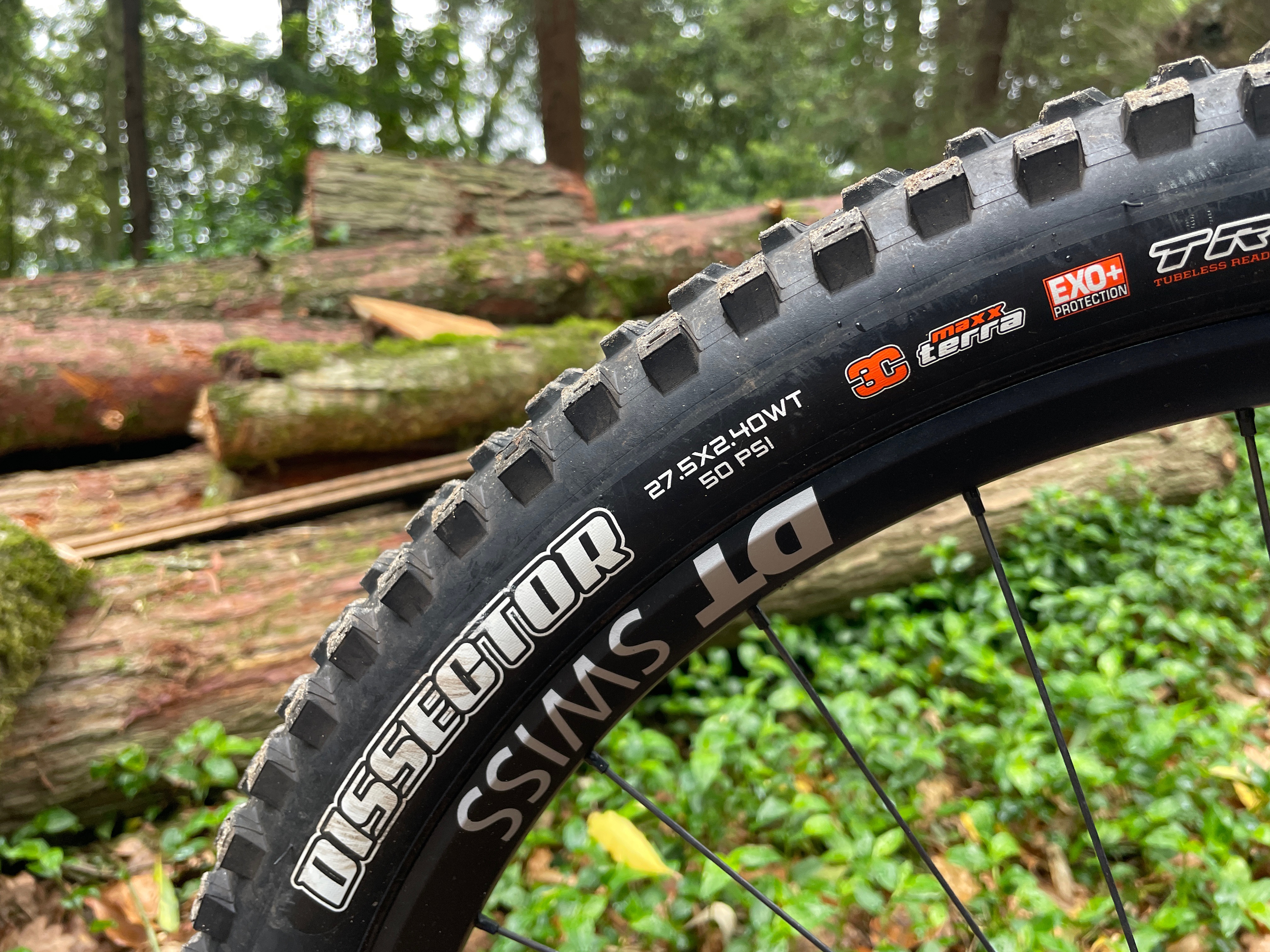
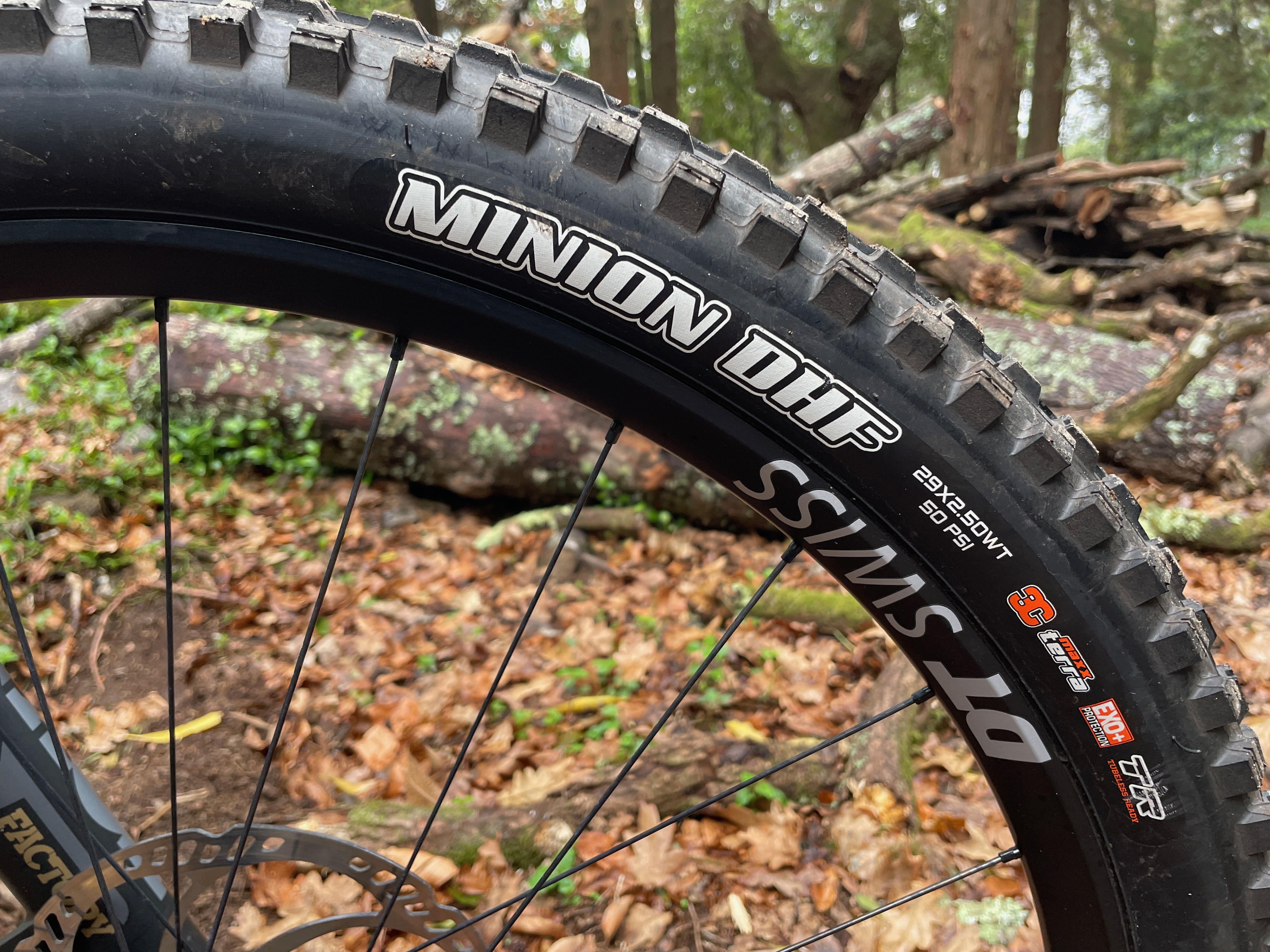
Overall
The Cannondale Moterra SL may not have the winning Top Trump number in every metric that folk bang on about but it’s currently the bike that is there or thereabouts with everything that matters. It has the best mix of weight, power, range and handling of any eMTB out there right now (that doesn’t cost a five figure sum anyway). In terms of metrics, the Moterra SL weighs around 20kg, has 85Nm of torque, a peak power of 600 watts, can easily do 1,000m of ascending purely on Boost and is a barrel of fun to ride anywhere you choose to. It’s also very Cannondale. It’s doing its own thing. It’s not copycatting something else.
Cannondale Moterra SL 1 specification
- Frame // Series 1 Carbon, 150mm
- Fork // Fox Float Factory 36 GRIP2, 160mm
- Shock // Fox Float X Factory, 210 x 55mm
- Wheels // DT Swiss XM1700
- Front tyre // Maxxis Minion DHF 29 x 2.5in 3C EXO+
- Rear tyre // Maxxis Dissector 29 x 2.4in 3C EXO+
- Chainset // E13 E-Spec Race Carbon Gen 4, 165mm, 34T
- Drivetrain // SRAM XO Eagle AXS Transmission
- Brakes // Magura MT7, 203/203mm
- Stem // Cannondale 1, 35mm
- Bars // HollowGram SAVE, 780 x 30mm, 35mm,
- Grips // Cannondale TaperRidge
- Seatpost // DownLow dropper 170mm
- Saddle // Fizik Terra Ridon X3
- Bottom Bracket // SRAM DUB
- Motor // Shimano EP8, Custom Tuned, 85Nm
- Battery // Custom 601Wh
- Size tested // L
- Sizes available // S, M, L, XL
- Weight // 20.4kg
Geometry of our size Large
- Head angle // 62.5°
- Effective seat angle // 77.0°
- Seat tube length // 445mm
- Head tube length // 135mm
- Effective top tube // 619mm
- BB height // 30mm BB drop
- Reach // 470mm
- Chainstay // 453mm
- Wheelbase // 1,283mm






